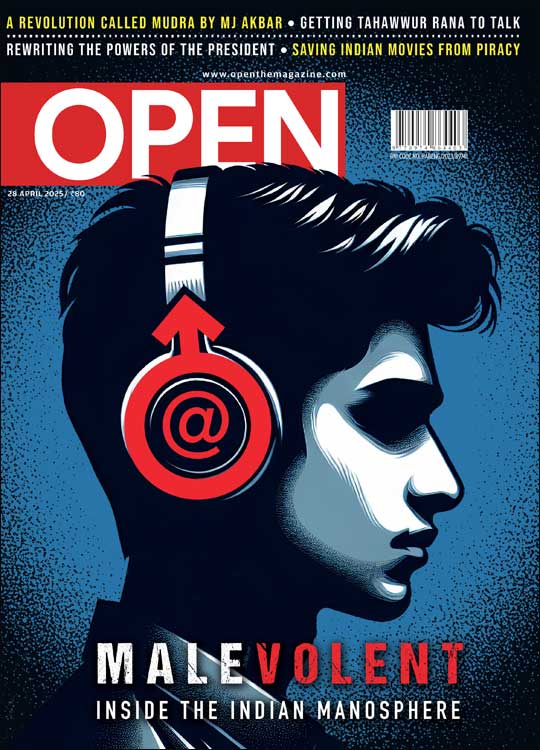Scheduled Cast
Almost every big-budget movie is losing money in Bollywood. And yet, even if a small-budget movie makes thrice its cost, the industry does not count it as a blockbuster. Welcome to the warped economics of la-la-land
 Satyen K Bordoloi
Satyen K Bordoloi
 Satyen K Bordoloi
|
19 Jan, 2011
Satyen K Bordoloi
|
19 Jan, 2011
/wp-content/uploads/2015/11/movies2.jpg)
Almost every big-budget movie is losing money in Bollywood. Yet, even if a small-budget movie makes thrice its cost, the industry does not count it as a blockbuster.
Atul Mongia WAS one of the three people most responsible for the making, look and feel of the most unusual film to emerge from Bollywood last year. As casting director, Atul had handpicked each of the movie’s actors, but his role didn’t end there. He trained the cast for three months, doubled as an assistant director, and even did a bit role in the film. By the time he saw the first cut, Atul knew it would be critically appreciated. But that it would make a lot of money never once occurred to him.
“I think it finally sank in on the third week of its theatrical run,” says Atul, “I watched a midweek afternoon show that was half packed. I saw people laugh and be stunned at just the right moment.” He is talking about a film whose entire budget was less than that of an extravagant Bollywood song. Though India has seen small-budget films in the past, all of them tried cheaper alternatives to Bollywood’s established rules. This film abandoned conventions. Not only did it not have one steady shot, it was almost entirely shot by the actors themselves with no one else in the room to say “action” or “cut”. It did not have a song, or stars, or even mediocre sets constructed for it.
The film was Dibakar Banerjee’s B-grade sounding film Love Sex aur Dhokha (LSD). Atul gave six months of his life to LSD for a paltry sum which he does not want printed. He says the budget was not on his or anyone’s mind when they were making the film. “The success of the film landed me so many offers,” he says, “that it’s almost like getting a royalty on LSD.” The film was made at an unbelievable production budget of Rs 1.5 crore, with its total budget including prints and publicity being only Rs 4 crore. The film made Rs 14 crore odd. And yet, for a movie that made triple of what it used up, LSD is not considered a ‘blockbuster’ in Bollywood.
Or consider this. According to media reports, a song for the Salman Khan flop Veer cost Rs 3.5 crore, took 11 days and 600 extras to shoot. Meanwhile, the entire production budget of Phas Gaye Re Obama was Rs 3 crore. The movie was shot in one month with a cast and crew of 100 people. Re Obama has made about Rs 5 crore so far, while Veer barely recovered half its cost of Rs 50 crore. But no one in Bollywood calls Re Obama a superhit.
“Nobody knows the definition of a Bollywood blockbuster,” says Komal Nahta, trade analyst and editor of KoiMoi.com and Film Information, “We follow a system where we define a hit as a film that has made double its cost. A superhit is one that more than doubles the investment, and blockbuster is almost two-and-a-half to three times. Dabanng is a superhit, 3 Idiots is a blockbuster.” For the record, he calls LSD a hit despite its having made more than thrice its total cost.
This vagueness of definition and reluctance to call small-budget films ‘blockbusters’ reveals two characteristics of Bollywood—their resistance to acknowledge change and obsession with all things big; big sets, big stars, big budgets. Big, however, does not work most of the time. LSD’s success stands out after a year in which all things big fell like dominoes. Sanjay Leela Bhansali’s Guzaarish, made with two of India’s biggest stars—Hrithik Roshan and Aishwarya Rai—on a total budget of Rs 75 crore, took home just Rs 40 crore. Mani Ratnam’s Raavan, with Aishwarya and Abhishek Bachchan, soaked up a good Rs 50 crore but made only Rs 30 crore. The cost of the Ranbir Kapoor and Priyanka Chopra starrer Anjaana, Anjaani: Rs 43 crore. It made less than half of it. Kites, Action Replay, Khelein Hum Jee Jaan Sey…the list could go on. Nahta estimates Bollywood’s 2010 losses at Rs 475 crore.
On the other hand, audience response to the few independent filmmakers who took a parallel route has taken everyone by surprise. Some of these small films have become ‘blockbusters’ by Nahta’s definition. Besides LSD, there’s Peepli Live (production budget: Rs 5.3 crore; theatrical recovery: Rs 18 crore) and Tere Bin Laden (production: Rs 5 crore; recovery: Rs 13 crore). Others like Do Dooni Char (budget: Rs 7 crore) and Udaan (Rs 3 crore) recovered their money at the box office. Yet, says Anusha Rizvi, co-director of Peepli Live, which is also this year’s official Indian entry to the Oscars: “Had it been a year where the big films had done equally well, the small films, despite their success, would have been sidelined.”
HOW TO MAKE A BLOCKBUSTER WITH FIVE CRORE
Anurag Kashyap, the patron saint of ‘indie films’ as this genre is called, makes his films at obscenely low budgets. Most have been made for under a million dollars (Rs 4.5 crore). Even his bigger films have been just over that limit, with No Smoking at Rs 7 crore and Dev.D at Rs 6 crore. “To make a film, you really don’t need to spend too much money,” he says, “Sadly, Bollywood spends its money in the wrong places like sets, expensive costumes and payment of stars.”
A million dollar film takes hard work. First, you bump up against the Bollywood mindset. Logic would dictate that a cheaper movie is easier to make since you have less funds to raise. But that doesn’t hold. Ask Pooja Shetty Deora, who comes from an old-guard Bollywood family. Her father Manmohan Shetty owned Adlabs before he sold it off and started Walkwater Media, a film production house. When Pooja and her sister wanted to produce Tere Bin Laden, they found their father reluctant. He gave his nod but no thumbs up. “Four days before the release of the film, he finally said that he liked it,” says Pooja, “His validation was extremely important to us, but it came once the cat was out of the bag.” She admits that they were a bit naïve about how they went about the film. “We went against a lot of traditional Bollywood wisdom that told us not to release the trailers too early, or try our best to introduce a love angle. We did none of it. Our focus was more on the story. It was an intuitive approach.” She is honest enough, however, to admit that “one successful film does not mean anything”; “Give us ten years and we’ll know.”
Kiran Rao, director of Dhobi Ghat (production budget: Rs 5 crore), uses the term ‘guerilla filmmaking’ on being asked to describe how she kept her budget low. This means grabbing whatever is available cheap—like real locations and crowds who don’t have to be paid.
Low-budget filmmakers are the wild bunch on the periphery of Bollywood. They travel cattle class on trains, stay in decrepit hotels for shoots, eat cheap food on leaf plates, provide no vanity vans to their leads, and prefer choking to death than spending crores on a song. Scrounging for cash spells problems, of course. Dibakar Banerjee welcomes these. He even has a theory of constraints. “Without constraints, no creative effort can survive,” he says, “A director with an unlimited budget will not even be able to get off his chair and start shooting. So the biggest factor that makes a film happen and differentiates it from others is this constraint, for it decides the creative solution that a maker finds for his film.”
Then there’s marketing and promotion, the third necessity for a small-budget blockbuster. Both LSD and Peepli Live had great marketing. “Besides Aamir Khan and Ekta Kapoor, most have not yet realised how crucial effective marketing is for a film,” says Dibakar. “Good, intelligent, low-budget films by themselves don’t do much. They have to be marketed extremely intelligently to maximise their value.”
What about stars, the pivot around which the blockbuster myth perpetuates itself in Bollywood? Do they matter for a small movie? “The only major advantage of a big star is that publicity gets taken care of without the producers having to worry too much about it,” says Abhishek Sharma, the 32-year-old director of Tere Bin Laden. “Finally, the audience is all important. They have to be entertained. Sometimes you do it with a brilliant script and unknown cast, and sometimes a good story with a star. Any combination or formula would do.”
THE SHOESTRING REVOLUTION
Films made on shoestring budgets have the potential to transform Bollywood. There is a precedent for this in Hollywood of the 1940s, when TV began to steal its profits and theatrical occupancy nosedived. Hollywood tried different things—stereo sound, cinemascope, the works—but couldn’t arrest the decline. Sounds familiar?
Then, a call for change blew in from overseas. As the French New Wave gained steam, many of their films found release in US theatres. Despite their limited budgets, need of subtitles and absence of stars, the 1960s films of auteurs like François Truffaut and Jean-Luc Godard surprised Hollywood. Eventually, they saw in this threat a window of opportunity. In the late 1960s and early 1970s, big Hollywood studios began to hand the directorial reins to a whole band of new, young and small-budget filmmakers. The math was simple. If a big-budget film cost 10 times a small one, instead of 10 big films a year, a studio could make just nine and spend the rest on another 10 small films. Most big Hollywood directors today—Francis Ford Coppola, Woody Allen, George Lucas, Steven Spielberg, Ridley Scott—began frugally as part of that wave (it also includes Martin Scorsese, who refused to come to 2010’s Mumbai Film Festival because the organisers didn’t send him a chartered plane—tastes obviously change with success).
Now the big studios there have segregated their big budget and small films into different units. Thus, Warner Brothers has New Line Cinema, 20th Century Fox has Fox Searchlight, and so on. Bollywood, too, is seeing the early days of this. UTV Motion Pictures, for example, has a subsidiary called UTV Spotboy with the explicit purpose of making clever low-budget films. Says Siddharth Roy Kapur, CEO, Motion Pictures, UTV, “Under the Spotboy banner, we produce different films, films that big banners will not normally touch. And by nature, these films are made by new filmmakers and are low budget.” He cites the example of No One Killed Jessica, which had a medium production budget of Rs 9 crore, higher than typical indie but lower than regular Bollywood fare. UTV’s ratio is interesting. Of the 12 films slated for release in 2011, four are under Spotboy, with production budgets around the million dollar mark.
SMALL MERCIES
The blockbuster worldview of Bollywood, though, is not going to change anytime soon. Anusha Rizvi gives the example of the Star Screen Awards, where, despite Udaan winning the best film and director awards, most other big awards went to Bollywood’s big-budget low-grossers (even duds) and not small films that earned both critical acclaim and box office success.
Komal Nahta does not believe big budgets or stars are in any danger from indie cinema. His argument rests on big returns: “How much profit can you make from a small-budget film, two or three crore? Whereas, if a big-budget film clicks, the profit is [Rs] 10-20 crore. Yes, there’s a danger of equally big losses, but your dream of making a killing is only satisfied by a big-budget film. 3 Idiots makes a profit of [Rs] 60 crore. How many successful low-budget films would you have to make to dream of such a figure?”
To be taken seriously, then, the indie film will have to deliver a blockbuster by the time-honoured definition. Like, say, a Blair Witch Project abroad, which was made for a million dollars and ended up raking in $200 million. “We are still not able to get this kind of multiplier in India because of our inability to maximise the revenue capacity of a film,” says Dibakar Banerjee, “First, the number of theatres limits the possible profit of a film to an average of Rs 40 crore after overheads like taxes are considered. Now imagine a film made in Rs 4 crore that makes Rs 40 crore. This is the kind of multiplier that will make the industry sit up and take notice and consciously try to make those kind of films.”
Even so, older, bigger banners are unable to ignore these new filmmakers and their audience profile. In 2010, Yash Raj made a dramatic U-turn of sorts with the indie feel of Band Baaja Baaraat, made for just over Rs 10 crore. It not only recovered its money, but also made a little profit for the studio that had no hit in 2010. Big stars are also no longer averse to taking up small films. Aamir Khan produced, vigorously promoted, released and made profits off Peepli Live. He hopes to recreate the magic with Dhobi Ghat.
“It has been worth it in the end,” sums up Anurag Kashyap. “Today, I get to make the films I want to make, without ever worrying about who’s in it, and I get the money to make it.” Anurag’s next Gangs of Wasseypur, starring Manoj Bajpai, has a budget of Rs 20 crore. “It spans a period of 60 years and will be shot in 22 cities,” he says, explaining this surge in budget. His next, Bombay Velvet, set in Bombay of the 1960s, is expected to have an even bigger budget. Raj Kumar Gupta, on the basis of only one film, Aamir, swung himself a Rs 9 crore production budget for No One Killed Jessica, while Dibakar is making his next, Shanghai, for Rs 10 crore. A possible blockbuster, if only the industry will call it that.
About The Author
CURRENT ISSUE
MOst Popular
3

/wp-content/uploads/2025/04/Cover-Manosphere.jpg)











More Columns
‘Colonialism Is a Kind of Theft,’ says Abdulrazak Gurnah Nandini Nair
Bill Aitken (1934 – 2025): Man of the Mountains Nandini Nair
The Pink Office Saumyaa Vohra